Anatomy and Physiology - A&P 1 > QUESTIONS & ANSWERS > CST Certification Review Questions with Complete Solution. BASIC SCIENCE: ANATOMY & PHYSIOLOGY (All)
CST Certification Review Questions with Complete Solution. BASIC SCIENCE: ANATOMY & PHYSIOLOGY
Document Content and Description Below
CST Certification Review Questions with Complete Solution. BASIC SCIENCE: ANATOMY & PHYSIOLOGY Which of the following structures is located in the alveolar processes? -Answer- Teeth The portion of ... the stomach surrounding the lower esophageal sphincter is called the: - Answer- Cardia The islets of Langerhans secrete: -Answer- Insulin The area in the duodenum where the common bile duct and the pancreatic duct empty is called the: -Answer- Ampulla of Vater The primary function of the gallbladder is to: -Answer- Store Bile The plicae ciculares, microvilli, and villi are -Answer- structures that increase surface absorption area in the small intestine The first part of the small intestine is the: -Answer- Duodenum The appendix is attached to the: -Answer- Cecum The double-layered, apron-like structure that hangs from the lower border of the stomach is the: -Answer- Greater Omentum The main function of the large intestine is to: -Answer- Reabsorb Water and Electrolytes A chemical reaction that provides energy by the breakdown of food molecules is called: -Answer- Catabolism Which of the following substances is the body's preferred source of energy? -AnswerCarbohydrates The process by which glucose is stored in the liver and skeletal muscle cells as glycogen: -Answer- Glycogenesis The structure that binds the small intestine to the posterior abdominal wall is the: - Answer- Mesentery The salivary glands located in the front of the ear that become inflamed and enlarged during mumps are the: -Answer- Parotid The catabolism of fats produces which of the following substances? -Answer- Ketone Bodies Vitamins A, D, E, and K are absorbed in the: -Answer- IntestineThe organs that lies posterior to the greater curvature of the stomach and is connected by a duct to the duodenum is the: -Answer- Pancreas When body cells require energy, what molecule is broken down? -Answer- ATP Molecule The outer layer of the intestine is the: -Answer- Serosa Cricoid cartilage is: -Answer- The ring of cartilage forming the inferior walls of the larynx The passageway for foods and liquids into the digestive system and for air into the respiratory system is the: -Answer- Pharynx The larynx is located between the: -Answer- Pharynx and Trachea The vocal cords are located in the: -Answer- Larynx Which structure has three divisions consisting of naso, oro, and laryngeal? -AnswerPharynx The function of the trachea is to: -Answer- Conduct air to and from the lungs The space between the vocal cords is called the: -Answer- Glottis The nasal cavity is divided into two portions by the: -Answer- Septum The structure that drains excess tears to the nasal cavity, causing the nose to run is the: -Answer- Nasolacrimal Duct The cartilaginous nasal septum lies upon which bone? -Answer- Vomer The structure that connects the middle ear and the throat, allowing the eardrum to vibrate freely, is the: -Answer- Eustachian Tube Another name for the tympanic membrane is the: -Answer- Eardrum The winding, cone-shaped tube of the inner ear is the: -Answer- Cochlea The nasal sinus located between the nose and the orbits is the: -Answer- Ethmoid Which ossicle of the middle ear covers the oval window? -Answer- Stapes The large, leaf-shaped laryngeal cartilage that acts as a trap door over the larynx is the: -Answer- EpiglottisWhich part of the ear is responsible for equilibrium? -Answer- Semicircular Canals A term referring to a waxy secretion in the external ear canal is: -Answer- Cerumen Which of the following structures is not an ossicle of the middle ear? -Answer- Vestibule The fluid within the membranous labyrinth is called: -Answer- Endolymph In the physiology of hearing, sound waves collect in the ______ and pass on to hit the ______: -Answer- External Auditory Canal, Tympanic Membrane Striated-voluntary muscle tissue is found in the _______ muscle tissue. -AnswerSkeletal The white, tough layer of the eye that gives it its shape is the: -Answer- Sclera The layer of the eye that is clear, covers the iris, and contains no blood vessels is the: - Answer- Cornea The layer of the eye that absorbs light rays and nourishes the retina through its numerous blood vessels is the: -Answer- Choroid Which muscle alters the shape of the lens of the eye to accommodate near or far vision? -Answer- Ciliary Muscle What structure regulates the amount of light entering the eye and assists in obtaining a clear image? -Answer- Iris Intraocular pressure is primarily dependent on: -Answer- Aqueous Humor At the junction of the sclera and cornea is a venous sinus known as the: -Answer- Canal of Schlemm The smooth intrinsic muscle that alters the shape of the eye lens is the: -Answer- Ciliary Body The ciliary body is part of which layer of the eye? -Answer- Vascular A capillary network of blood vessels within the renal cortex that functions as a filter is called the: -Answer- Glomerulus The triangular area of the bladder that is formed by the two openings of the uterus and the opening of the urethra is known as the: -Answer- Trigone Gerota's fascia is located: -Answer- Around the kidneyThe kidneys are positioned: -Answer- Retroperitoneally The functional unit of the kidney responsible for removing waste and regulating fluid is the: -Answer- Nephron The most abundant extracellular ion necessary for the transmission of impulses is: - Answer- Sodium The prostate gland secretes: -Answer- Alkaline Fluid The first step of urine production in which fluids and dissolved substances are forced through a membrane by pressure is called: -Answer- Glomerular Filtration Sperm are produced by the: -Answer- Seminiferous Tubules The cup-like extensions of the kidney pelvis that collect urine from the pyramids are: - Answer- Calyces The notch on the kidney through which the ureters exit is the: -Answer- Hilum Which of the following is the principal male hormone produced in the testes and responsible for sexual characteristics? -Answer- Testosterone The comma-shaped organ that lies along the posterior border of the testis is the: - Answer- Epididymis The only artery in the body that carries unoxygenated blood is the: -Answer- Pulmonary Artery The pacemaker of the heart is the: -Answer- SA Node Which arteries are formed by the bifurcation of the abdominal aorta? -Answer- Iliac The process by which blood cells are formed is known as: -Answer- Hemopoiesis Which of the following arises from the left ventricle? -Answer- Aorta The pancreas lies behind the stomach and duodenum in the right and left upper quadrants and is divided into -------- portions. -Answer- Three Which organ is responsible for the synthesis of many of the coagulation factors? - Answer- Liver The atrioventricular (AV) valve between the left atrium and the left ventricle is the: - Answer- Bicupsid [Show More]
Last updated: 3 years ago
Preview 1 out of 79 pages

Buy this document to get the full access instantly
Instant Download Access after purchase
Buy NowInstant download
We Accept:

Reviews( 0 )
$13.00
Can't find what you want? Try our AI powered Search
Document information
Connected school, study & course
About the document
Uploaded On
Aug 26, 2022
Number of pages
79
Written in
Additional information
This document has been written for:
Uploaded
Aug 26, 2022
Downloads
0
Views
123

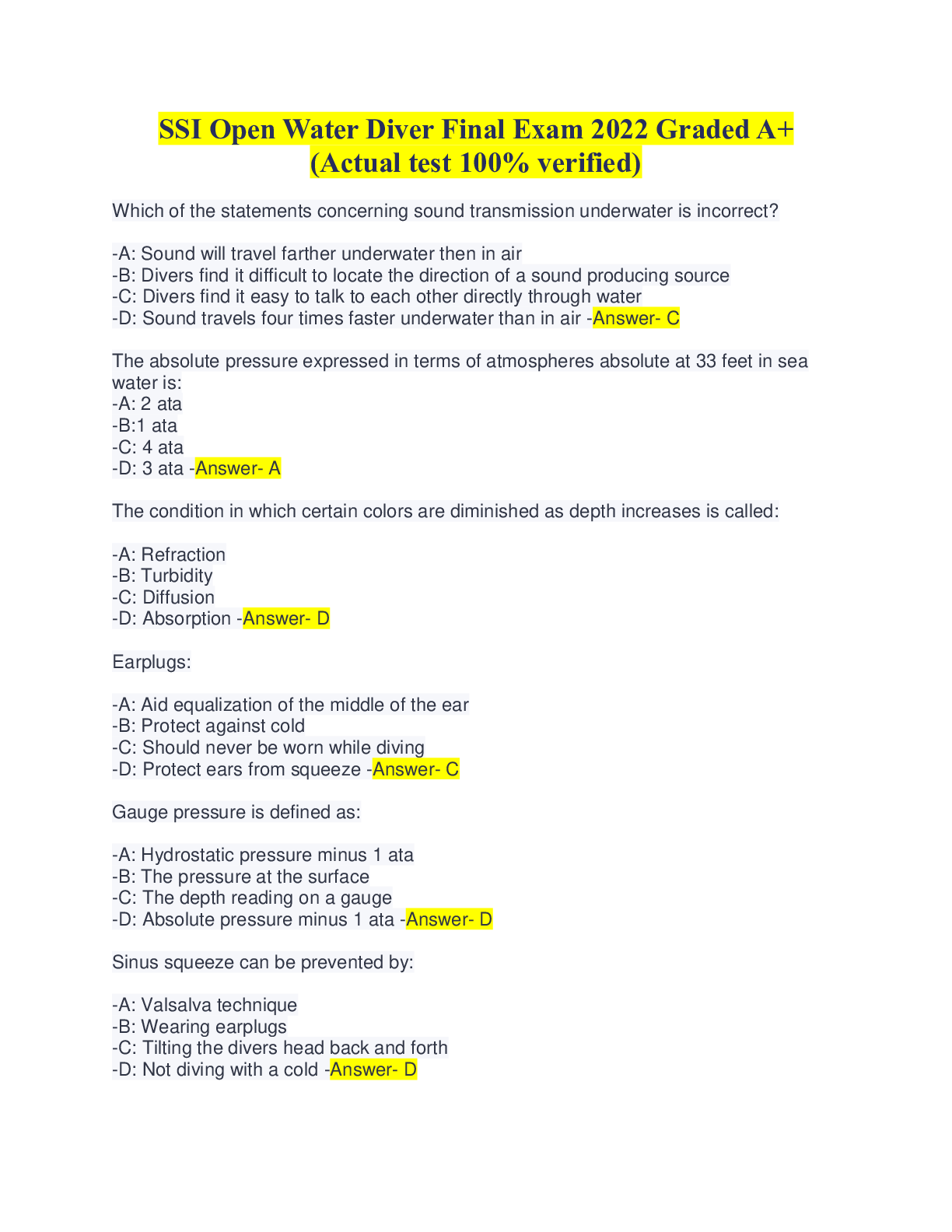

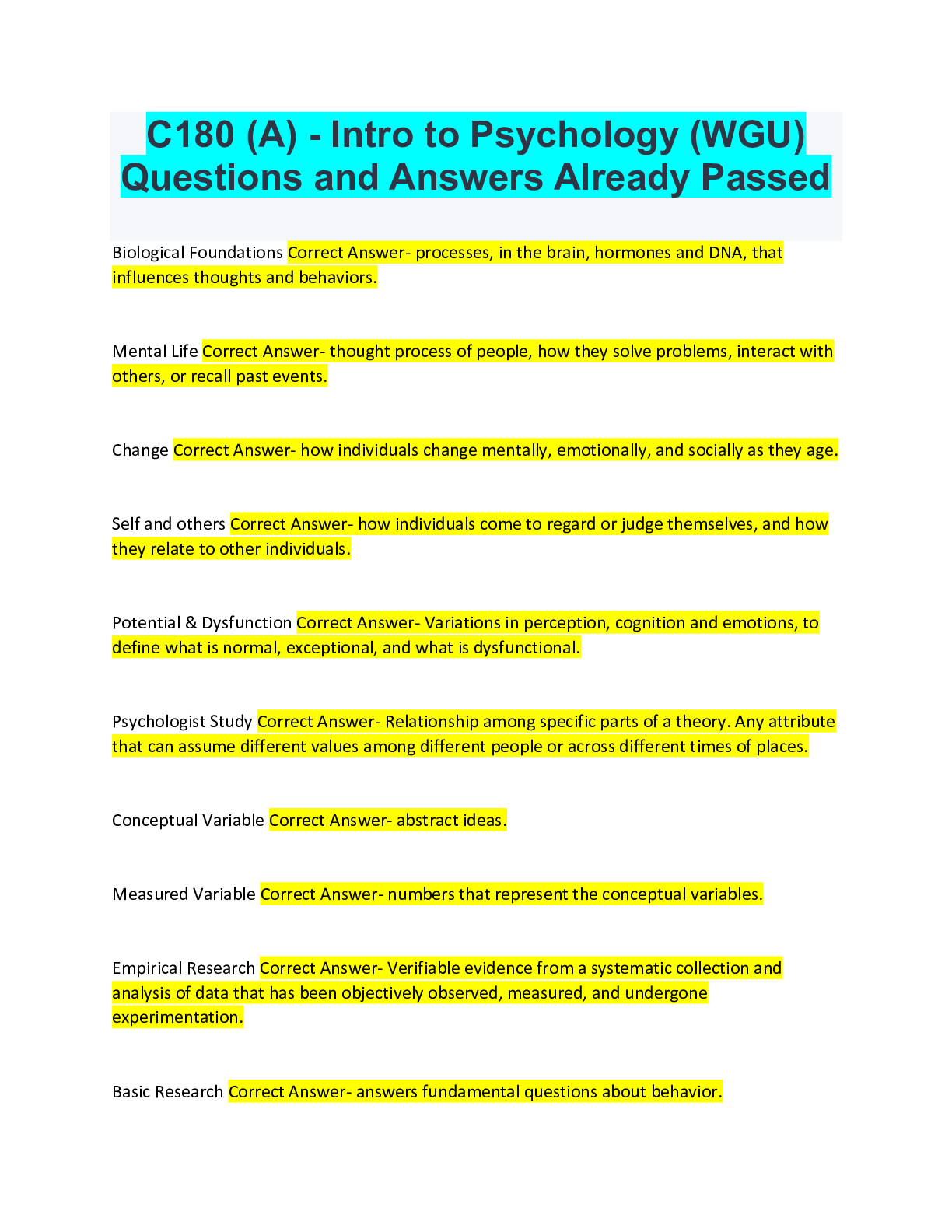
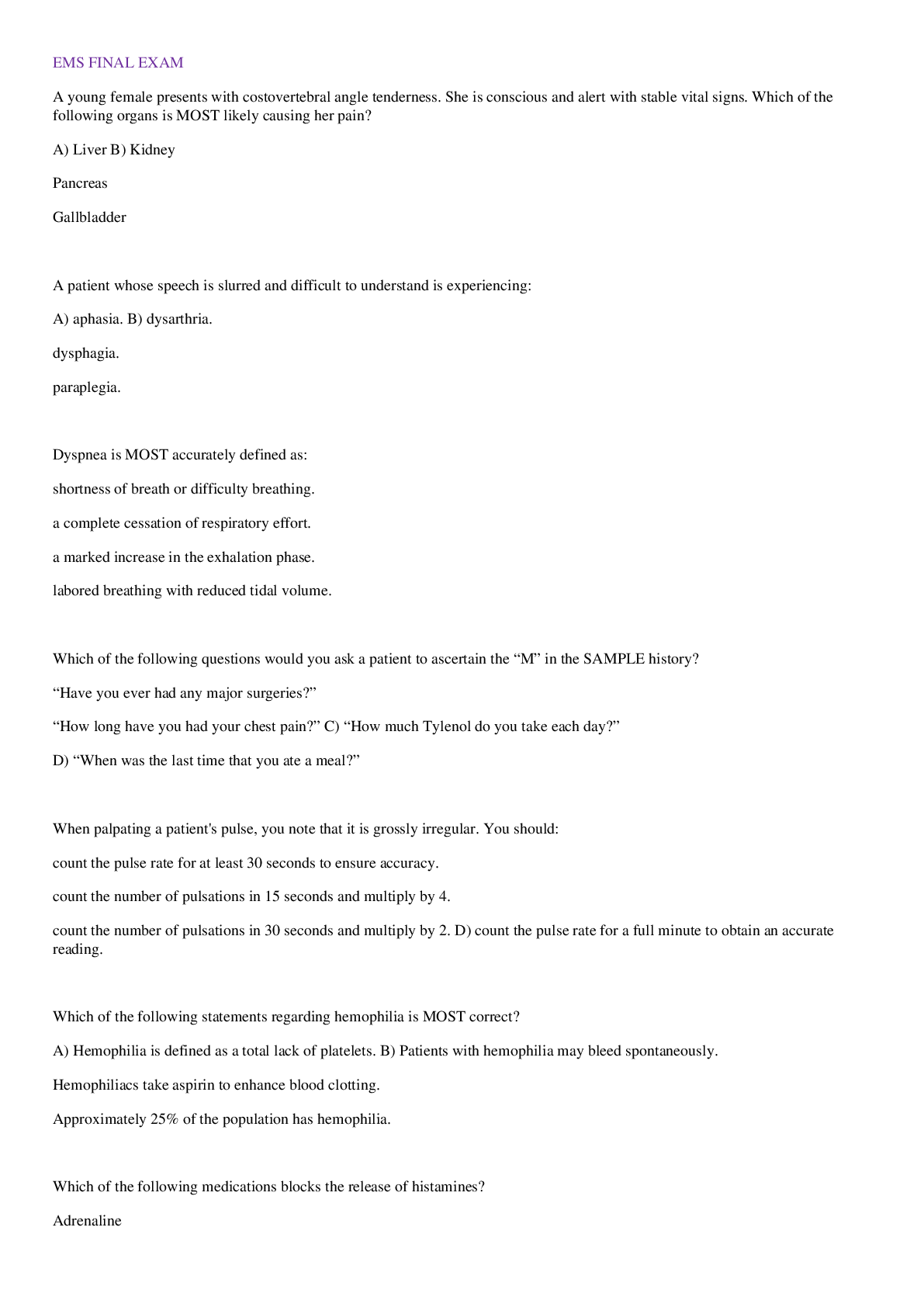

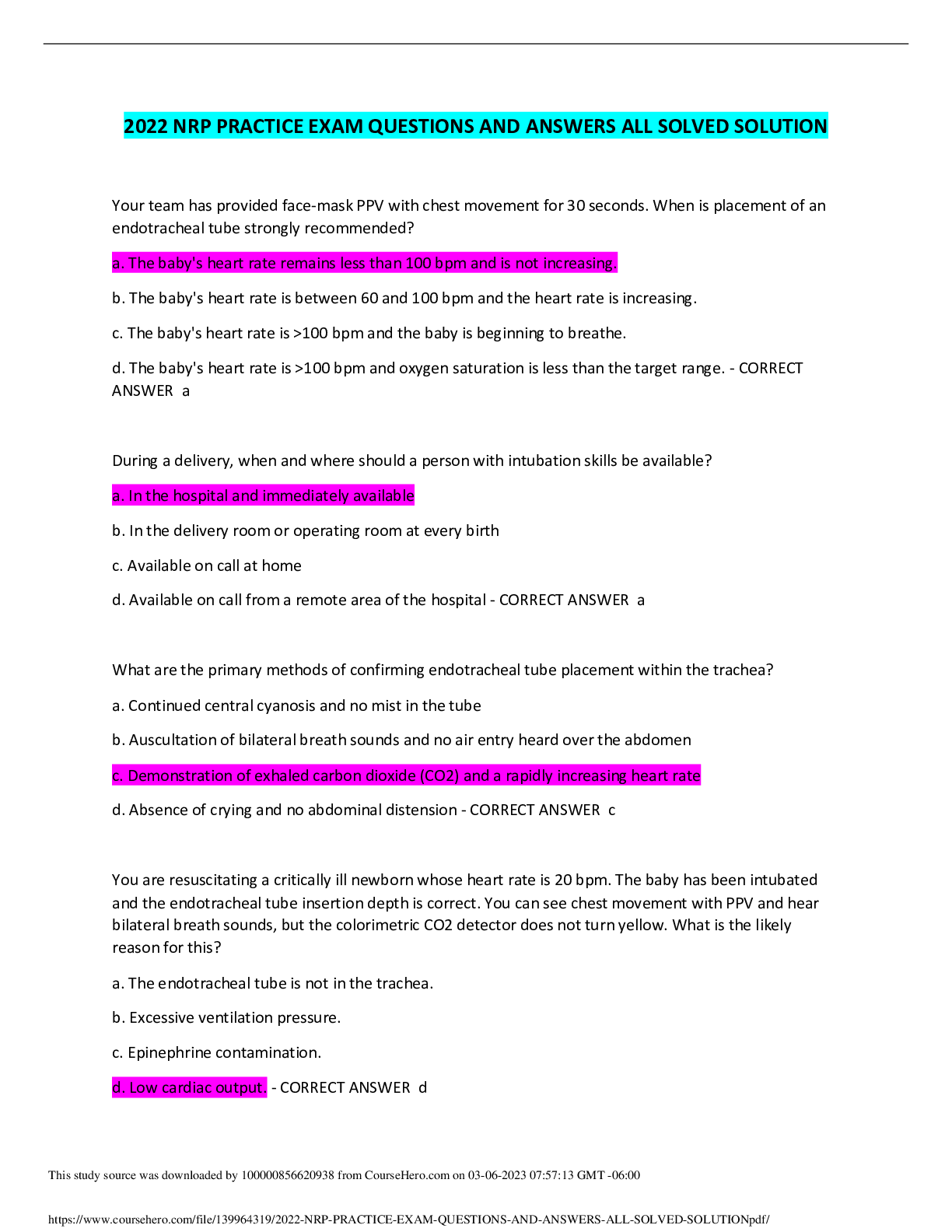
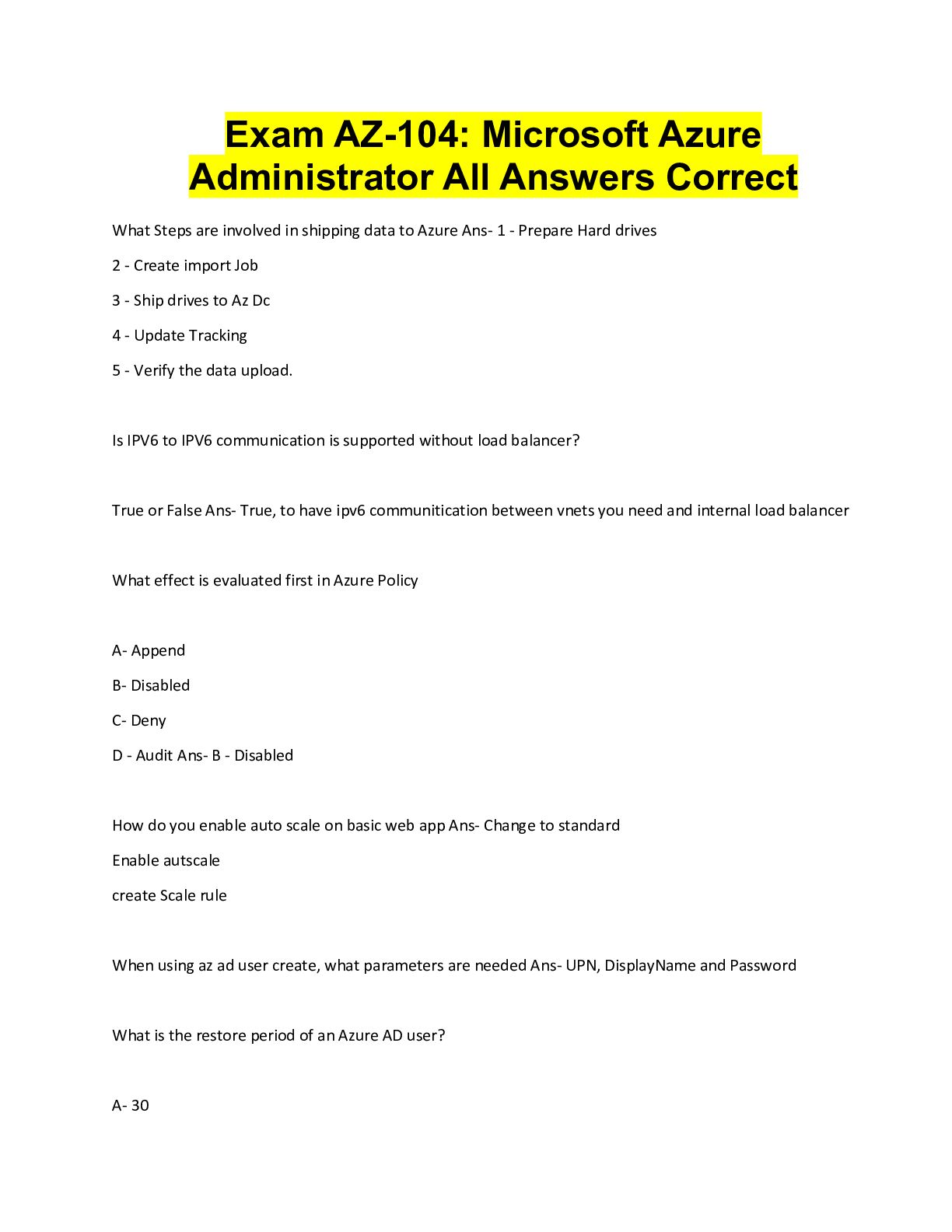
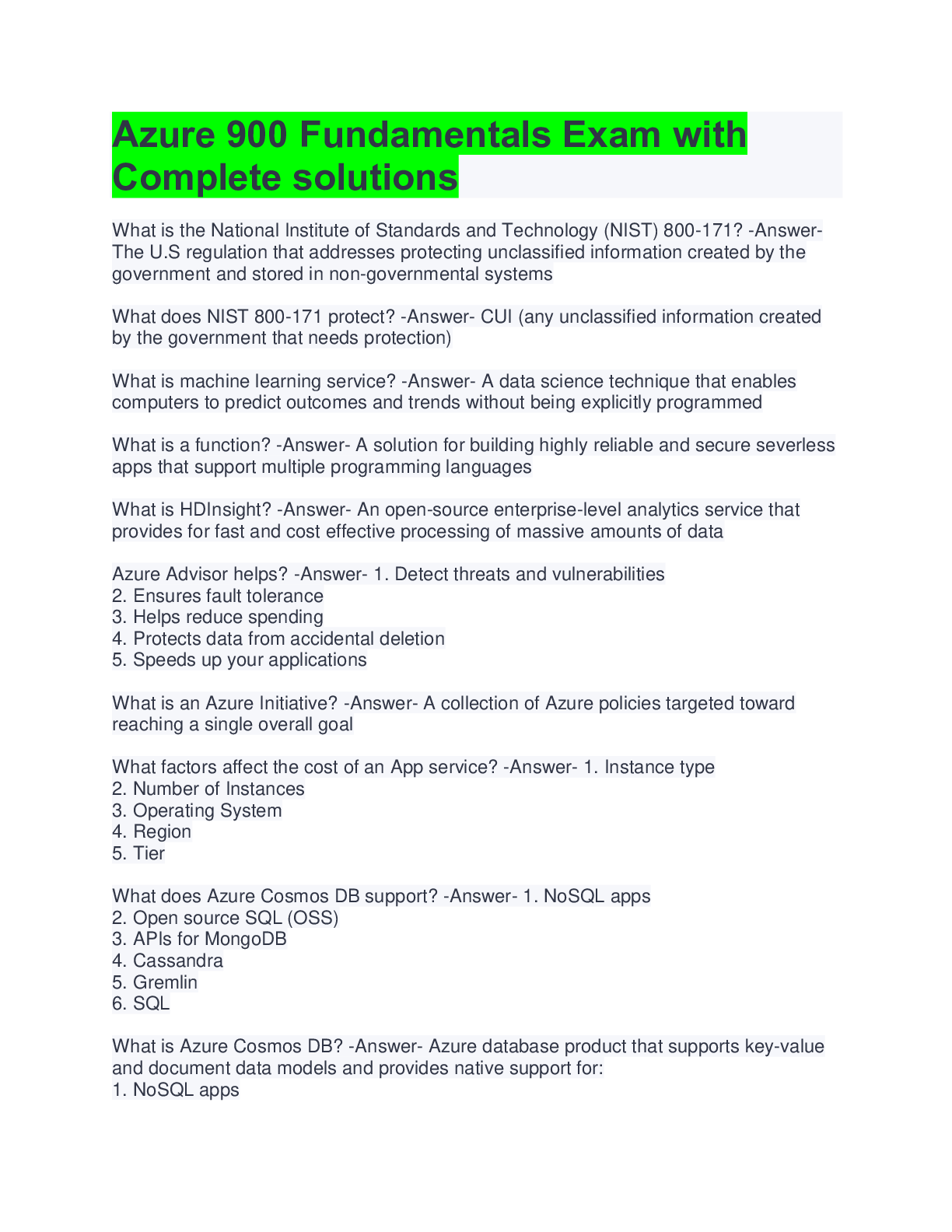
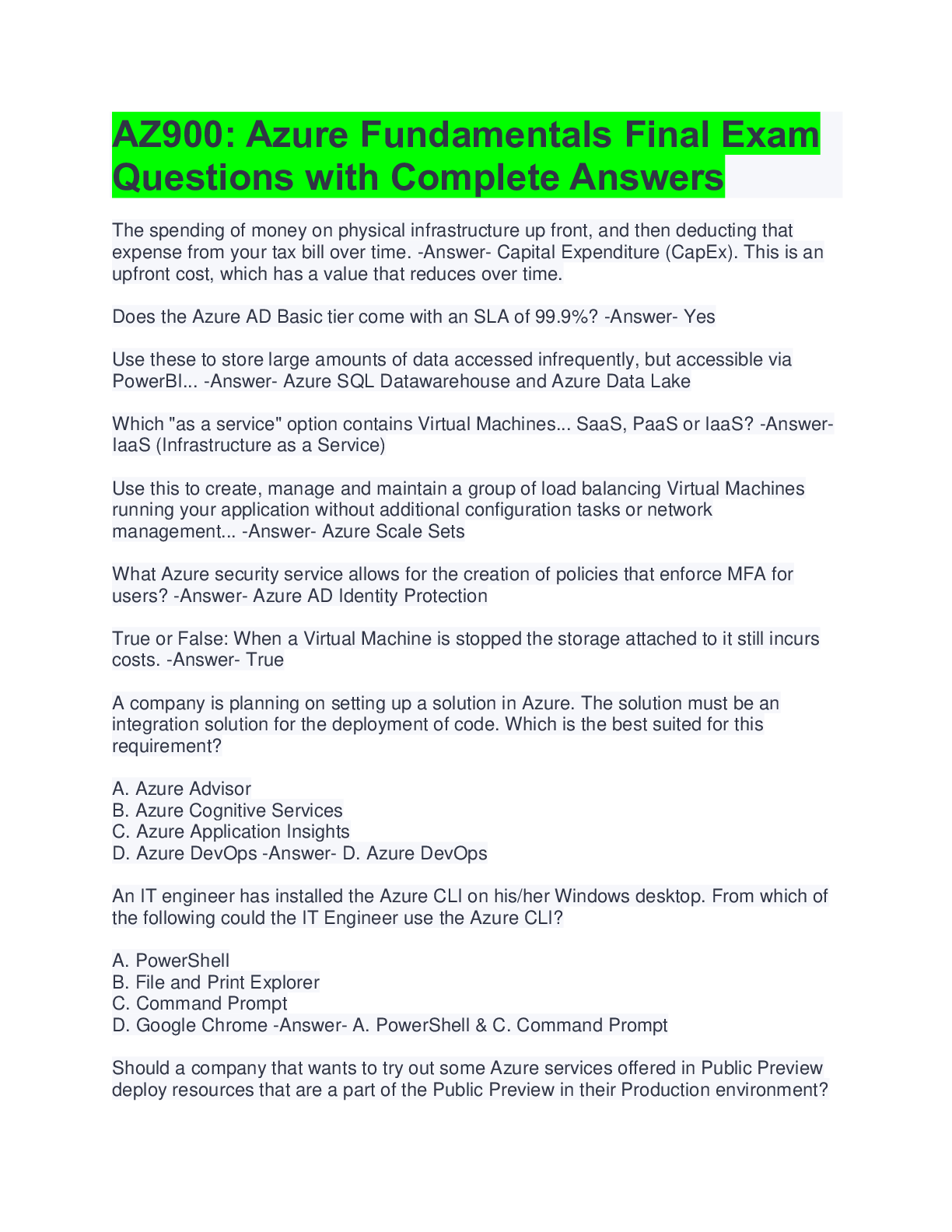
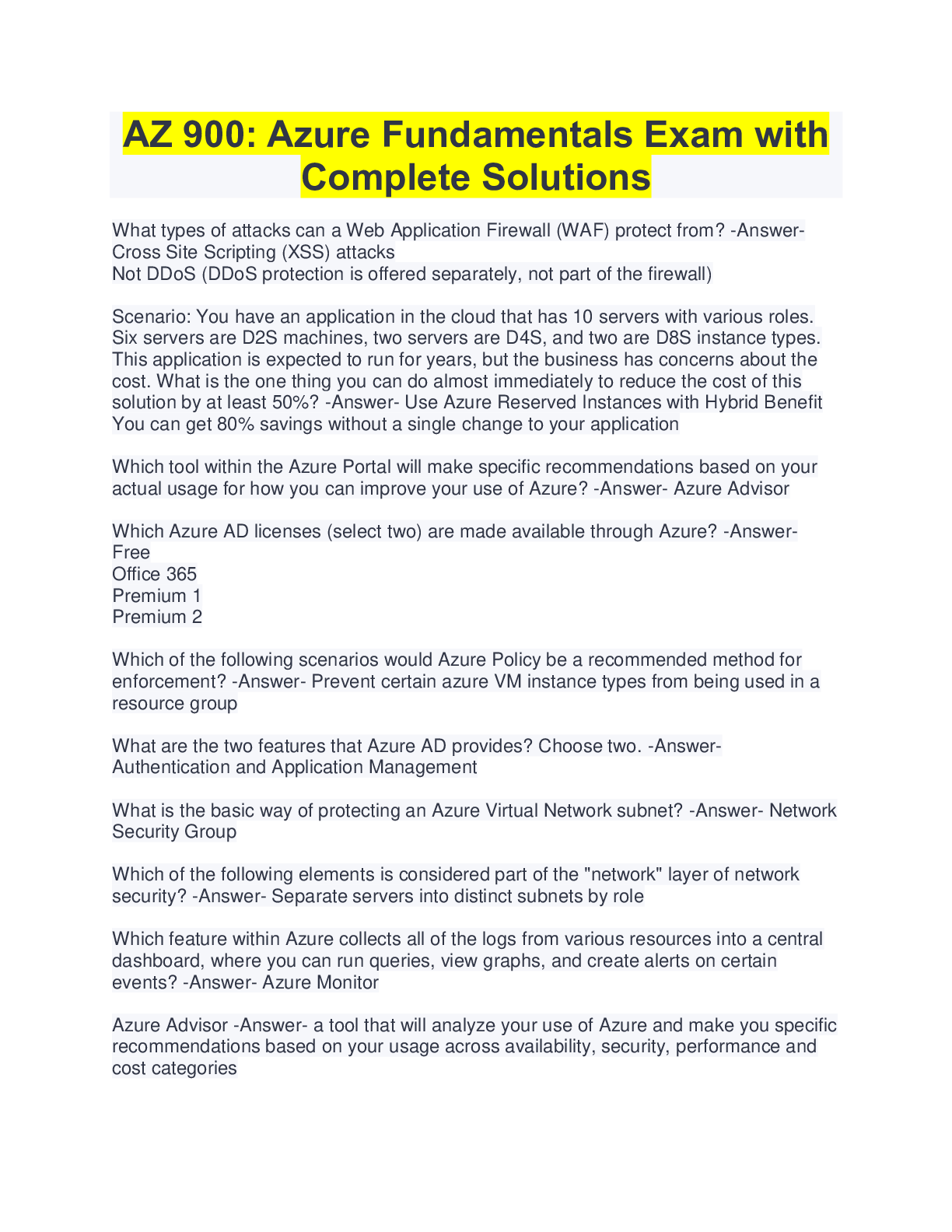
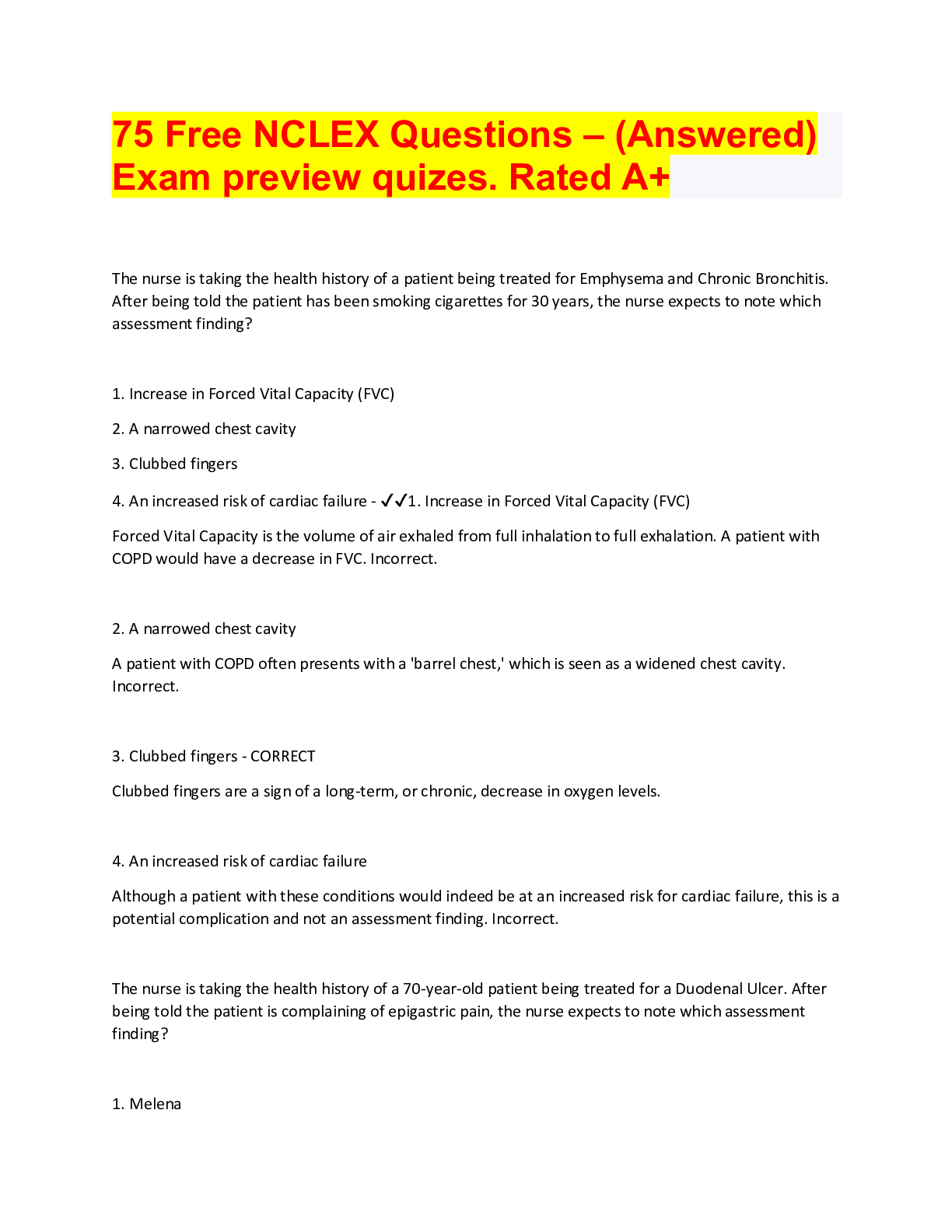







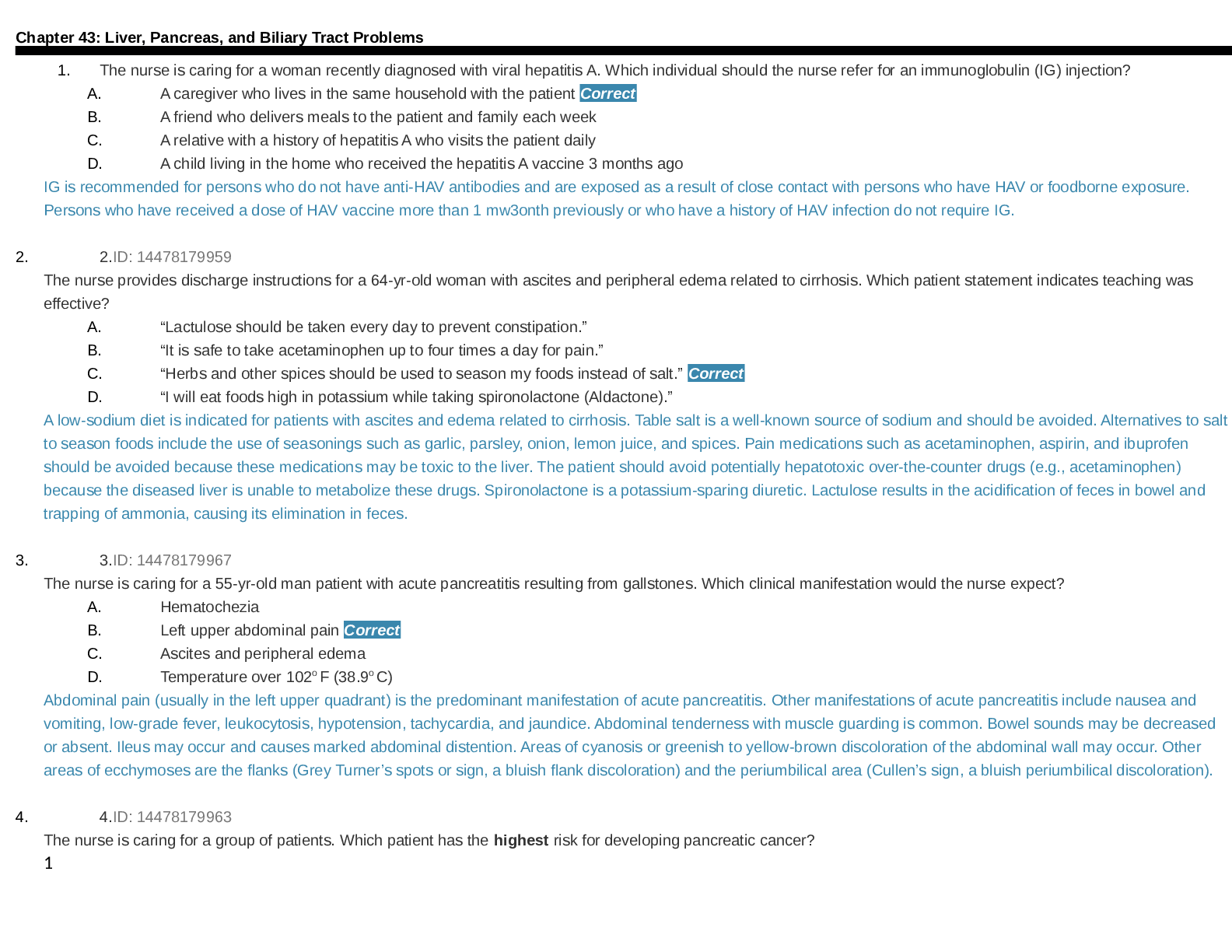
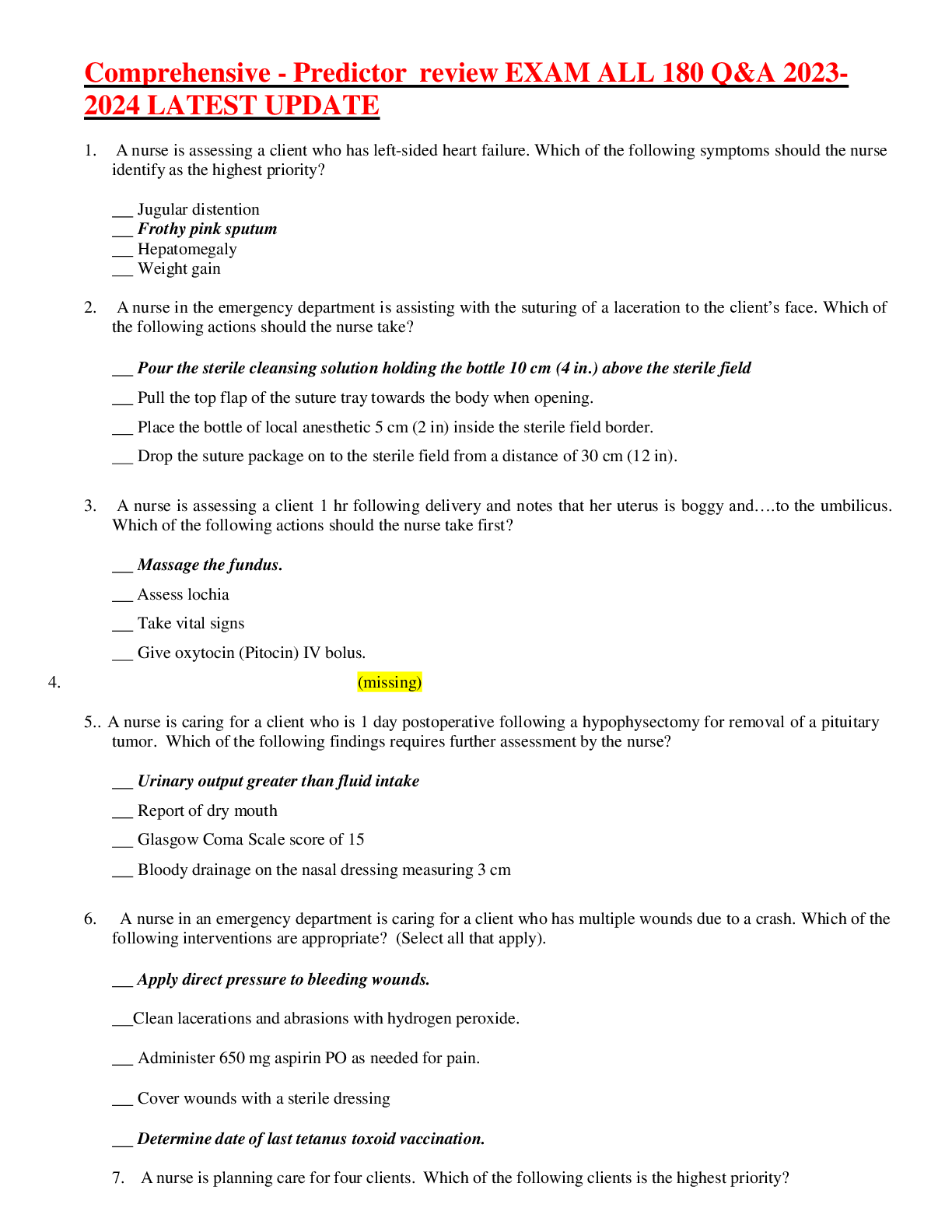


.png)


